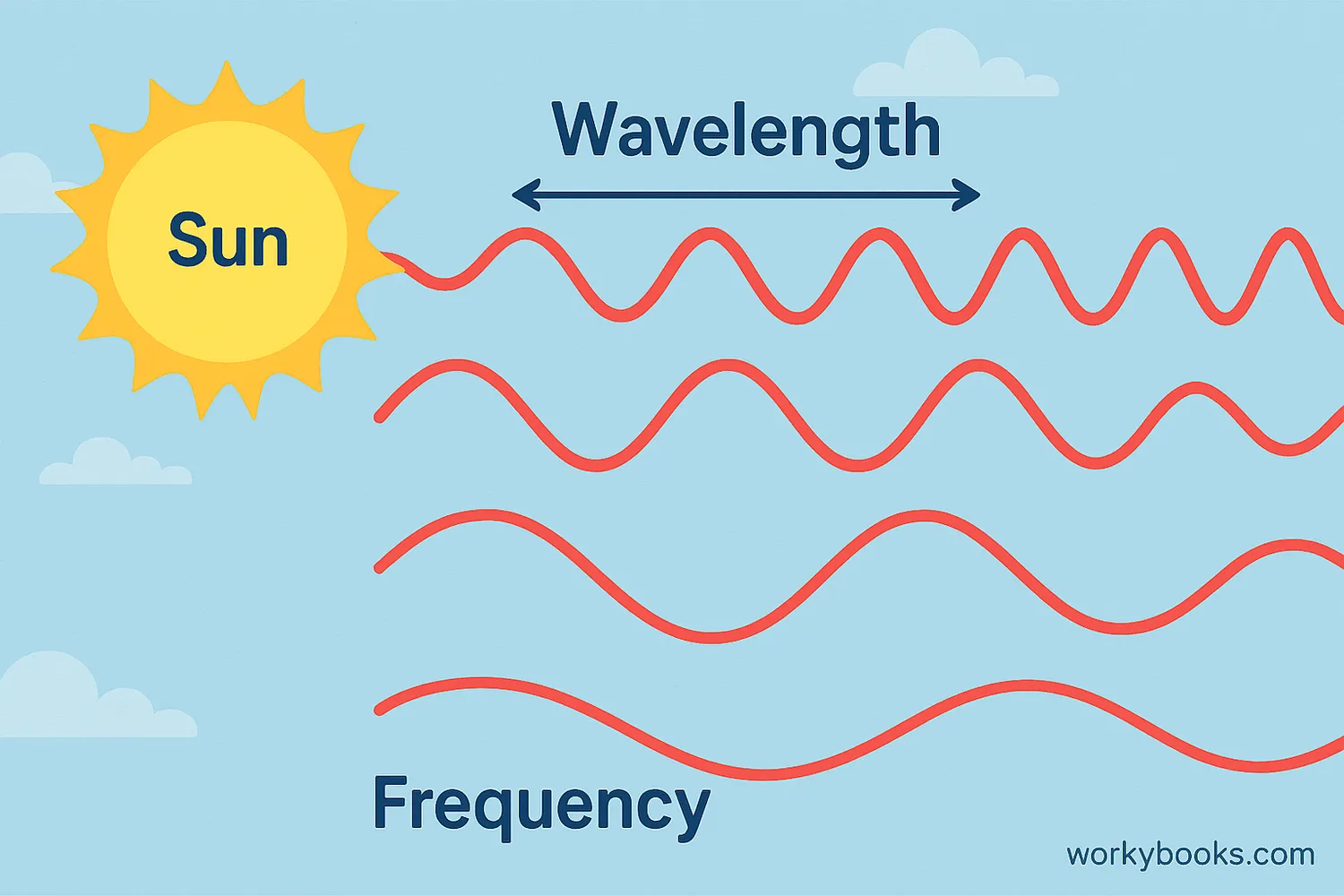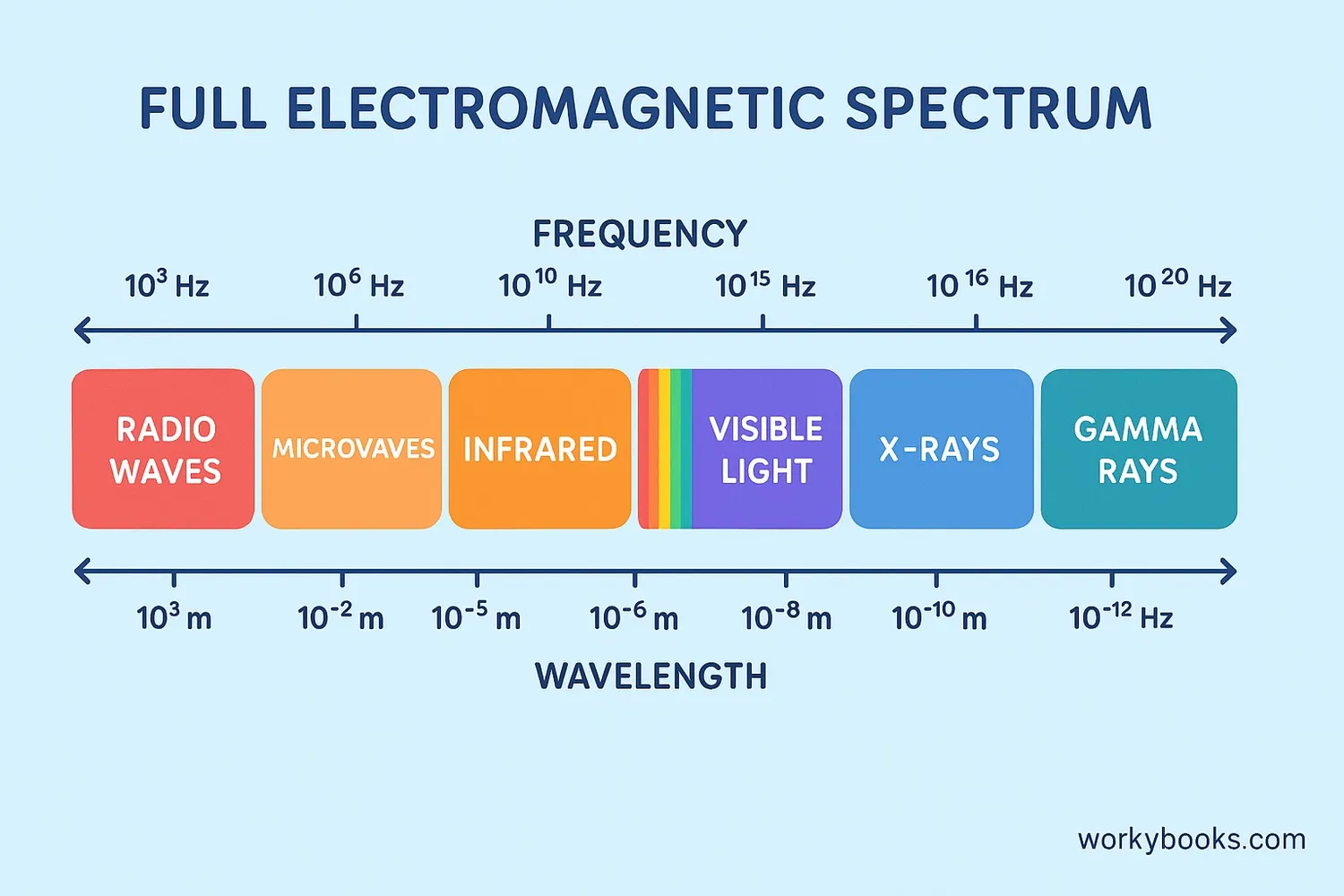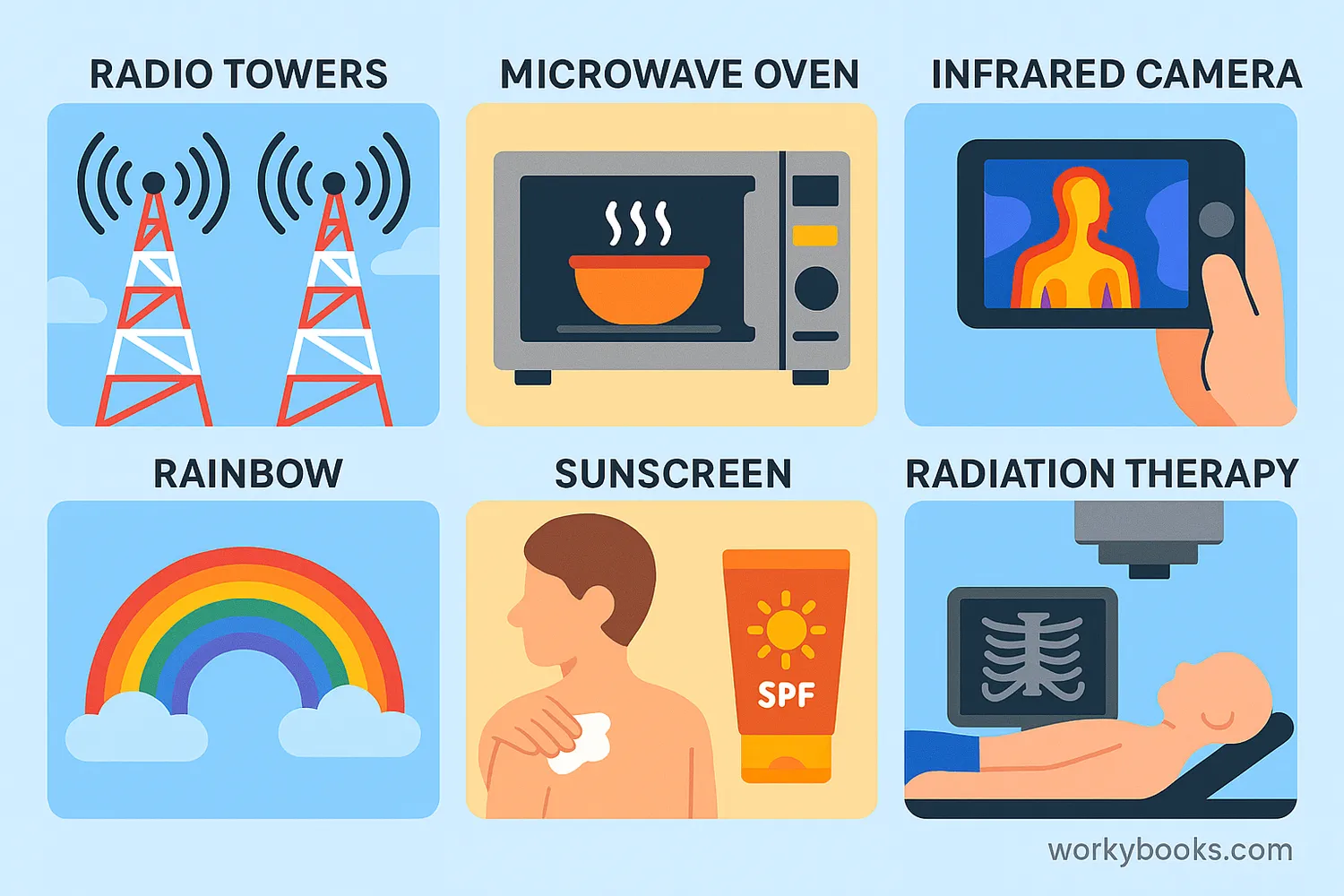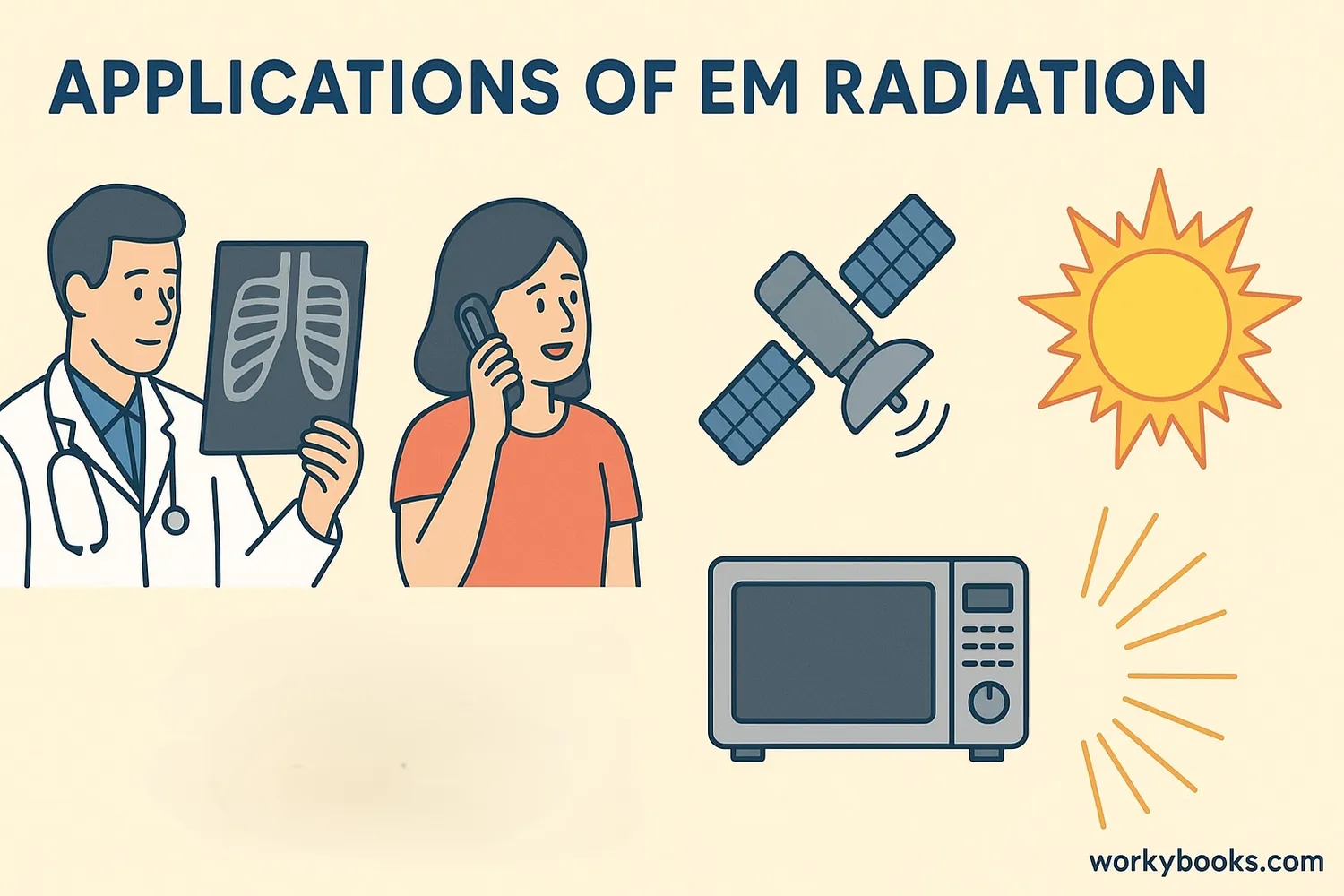Electromagnetic Radiation - Definition, Examples, Quiz, FAQ, Trivia
Discover the invisible energy waves that make our world work!
What is Electromagnetic Radiation?

Electromagnetic radiation is a form of energy that travels through space as waves. It's all around us - from the light that lets us see, to the radio waves that bring music to our radios!
These waves are made of tiny particles called photons that move at the speed of light. All electromagnetic waves travel at the same speed, but they have different wavelengths and frequencies. Wavelength is the distance between wave peaks, and frequency is how many waves pass a point each second.
Energy Fact!
The visible light we see is just a tiny part of the electromagnetic spectrum!
The Electromagnetic Spectrum

The electromagnetic spectrum is the complete range of electromagnetic waves, organized by their wavelength or frequency. It includes:
Radio Waves
Longest wavelength, used for communication
Microwaves
Used in cooking and cell phones
Infrared
Heat waves, used in remote controls
Visible Light
The light we can see with our eyes
Ultraviolet
Causes sunburns, used in sterilization
X-rays
Can pass through soft tissue, used in medicine
Gamma Rays
Shortest wavelength, used in cancer treatment
As we move from radio waves to gamma rays:
• Wavelength decreases
• Frequency increases
• Energy increases
Spectrum Fact!
Radio waves can be as long as a football field, while gamma rays are smaller than atoms!
Types of EM Waves

Let's explore the different types of electromagnetic waves and how we use them:
Radio Waves
• Longest wavelengths
• Used in radio, TV, and cell phones
• Can travel long distances
Microwaves
• Shorter than radio waves
• Used in cooking and radar
• Cell phones use microwaves
Infrared
• Felt as heat
• Used in remote controls
• Night vision cameras detect infrared
Visible Light
• The only EM waves we can see
• Colors: red, orange, yellow, green, blue, indigo, violet
• Essential for vision
Ultraviolet
• Causes sunburns
• Used in sterilization
• Some insects can see UV light
X-rays
• Can pass through soft tissue
• Used to see bones
• Too much exposure is harmful
Gamma Rays
• Shortest wavelength
• Highest energy
• Used in cancer treatment
Why EM Radiation is Important

Electromagnetic radiation is essential to modern life and our natural world:
Communication
Radio waves enable TV, radio, and wireless communication
Medicine
X-rays for imaging, gamma rays for cancer treatment
Vision
Visible light allows us to see the world around us
Without electromagnetic radiation:
• We wouldn't be able to see
• There would be no wireless communication
• Medical imaging would be impossible
• Our planet would be cold and dark
EM radiation from the sun provides the energy that powers almost all life on Earth!
Electromagnetic Radiation Quiz
Test your knowledge with this quiz! Answer all 5 questions to see how much you've learned.
Frequently Asked Questions
Here are answers to common questions about electromagnetic radiation:
Fun EM Radiation Trivia
Discover some amazing facts about electromagnetic radiation!
Ancient Light
The light from some stars takes thousands of years to reach Earth. When you look at stars, you're seeing them as they were in the past!
Animal Vision
Bees can see ultraviolet light that humans can't see. Flowers have special UV patterns that guide bees to their nectar!
Cosmic Microwave Background
Scientists have detected microwave radiation coming from all directions in space - leftover energy from the Big Bang that created our universe!
Accidental Discovery
X-rays were discovered by accident in 1895 when Wilhelm Röntgen noticed that a mysterious radiation could pass through objects and expose photographic plates.


